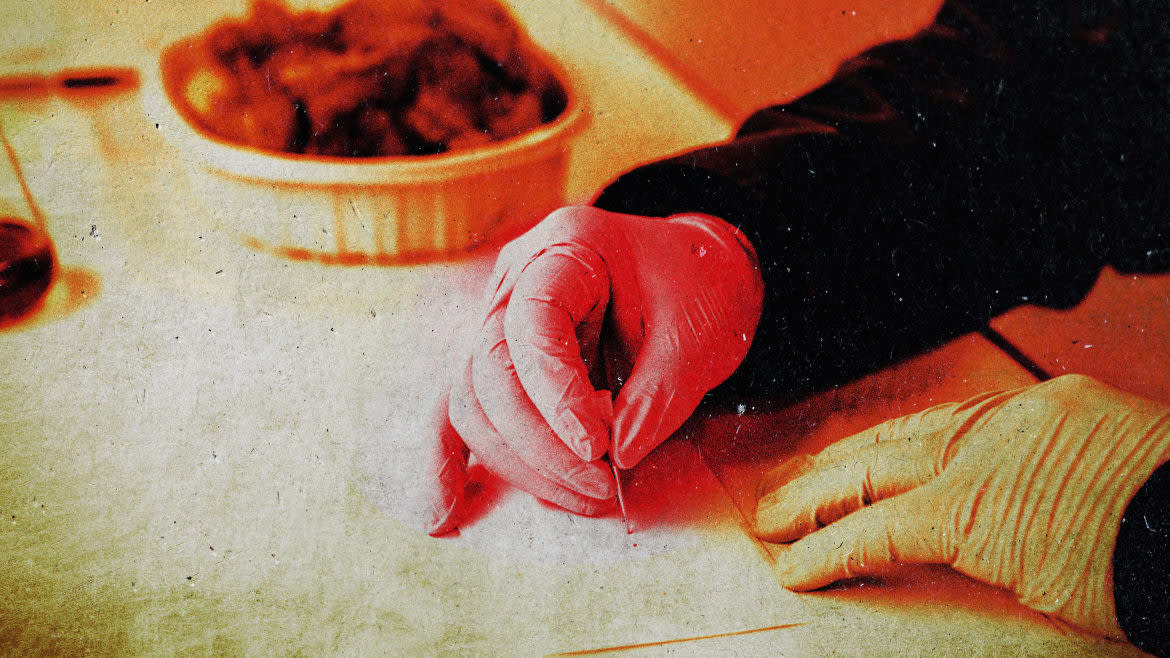This Glow Stick Could Save Your Life From Salmonella

Scientists overhauled a tedious process to diagnose salmonella infection, replacing it with a quick, easy-to-perform test that lights up like a glow stick in the presence of the pesky pathogen. Best of all, the new test reduces the wait time for results from the standard one day or longer, to a vastly more convenient one hour.
Each year, Salmonella typhimurium causes 1.35 million infections and kills hundreds of people in the U.S., according to the Centers for Disease Control and Prevention. Most of these infections stem from eating contaminated food (though people can also be sickened from the bacterium at petting zoos and daycares). Eating undercooked chicken is one of the major sources of salmonella infections, partially because about one in every 25 packages of grocery store chicken are contaminated.
Most people who contract salmonella recover after a brief bout of fever, stomach cramps, and diarrhea, but in rare cases the infection spreads from the intestines to a person’s bloodstream and can be life-threatening. In these cases, identifying the cause of the infection and treating it promptly with antibiotics is the difference between life and death. Culturing—growing a bacterial sample in a petri dish—is the gold standard for diagnosing salmonella infection, but it can take more than a day to perform and requires clinical diagnostic training.
Instead, researchers have set their sights on producing easy-to-use rapid diagnostics known as culture-independent diagnostic tests. And in a recent study, biomedical and chemical engineers at McMaster University in Canada designed a new diagnostic for Salmonella that produces a result in under an hour. Their research was published on March 18 in the journal Angewandte Chemie.
“Using these tests is easier than using a COVID test, which so many people are already doing,” McMaster chemical engineering researcher Carlos Filipe, who co-authored the research, said in a press release. “For this to be as effective and useful as possible, it has to be easy to use.”
The test works like a molecular glow stick, essentially. The engineers designed a synthetic molecule held between two microscopic gold particles. A particular enzyme made by the Salmonella bacteria cuts this molecule in half, causing it to glow a fluorescent red that can be seen by the human eye. And the more Salmonella are present, the brighter the color will be—allowing manufacturers and consumers to interpret the results of the test in real time.
4.9 Million Fabuloso Cleaner Bottles Recalled Over Bacteria Contamination
“Anyone can use it right in the setting where food is being prepared, processed or sold,” study co-author Yingfu Li, a chemical engineer at McMaster, said in the press release.
The researchers tested their diagnostic on pure samples of Salmonella bacteria, as well as milk, eggs, ground beef, and ground chicken to which they had added Salmonella. While uncontaminated milk and eggs did not produce a red signal, a light shade of red appeared for the beef and chicken, even without adding Salmonella first. Assuming those samples were indeed uncontaminated, the researchers speculated that the weak false positive results might be due to unknown enzymes in the meats that were snipping the synthetic molecule.
In the future, Toyota Tsusho Canada Inc., a subsidiary of the car manufacturer that helped fund the research, plans to develop the diagnostic for commercial use. In the meantime, though, consumers’ best bet against salmonella is investing in another inexpensive device that reads out results quickly: a food thermometer. The CDC recommends cooking poultry to an internal temperature of 165 degrees Fahrenheit—your stomach will thank you.
Get the Daily Beast's biggest scoops and scandals delivered right to your inbox. Sign up now.
Stay informed and gain unlimited access to the Daily Beast's unmatched reporting. Subscribe now.

